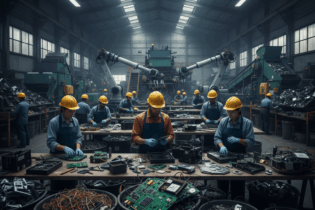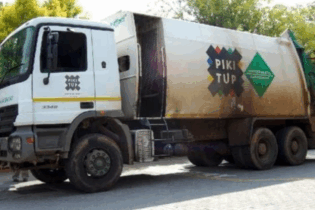The Green Building Council of South Africa (GBCSA), an independent, non-profi t company that was formed in 2007 to lead the greening of South Africa’s built environment, has given PPC’s new headquarters a 4-star rating.
Located in the middle of the hustle and bustle of the northern Johannesburg business centre, it was imperative that PPC became wary of its own environmental footprint. Eastgate 20 on Katherine Street, Sandton, now houses one of the largest cement suppliers in Southern Africa. The new building is strategically designed to efficiently reduce energy and water. The Green Star rating system from the GBCSA was designed to provide the commercial property industry with an objective measurement for green buildings, and to create and reward environmental leadership in the property industry. A 4-star rating recognises a building for its best practices. Eastgate 20 consumes less energyTo consume less energy, Eastgate 20 has been designed to utilise efficient lighting, which is only activated when an area is occupied, almost giving the incumbent the feeling that they light up the room. Further to this, the design has enabled the building to take advantage of natural light, reducing the building’s electricity demands during office hours. “We have also made considerable progress through our new air-conditioning system. It uses inverter technology for the compressors – the speed is controlled so that cooling is provided as needed and the motors do not just stop and start,” says Tshilidzi Dlamini, PPC’s group sustainability and environmental manager. A power converter is a power electronic device that changes the supply voltage from a fixed 50 cycles per second mains AC waveform to a variable frequency and variable voltage waveform. This enables a standard fixed speed AC motor to be run at variable speeds, and for the speed of the motor to be accurately controlled. AC motors that are not fitted with a power converter are only capable of running at full speed (switched on) or zero speed (switched off).
With a power converter fitted, the output of the driven machine (e.g. pump, fan, compressor) can be adjusted and controlled to deliver the exact output volume, ie water- and airflow, required to meet demand, and, therefore, energy is not wasted.
“The cost of installing a power converter is significant, but so are the energy savings that can be achieved. Yes, technology like this is expensive, but the payback period from savings in electrical energy costs can be less than a year, making it an extremely viable option,” says Chris Yelland, managing director of EE Publishers. Water preservation crucial to the cement businessEastgate 20 is expected to make a significant reduction in the usage of potable water through the installation of water-efficient fittings for taps, urinals and toilets. Furthermore, Eastgate 20 has also increased the quality of the water in the adjacent environments. PPC has a stormwater-treatment site, adjacent to Eastgate 20, where they treat all the water from their premises and that of the neighbouring sites to ensure that it is clean before it flows into the river. “Normally during a storm event, rainwater runs off hard surfaces into stormwater drains and is directed into the nearest river to avert flooding. In built-up areas, the abnormally amplified increase in water flow during storm events disrupts the natural balance of the ecosystem and the river’s ability to function as part of a healthy ecosystem,” says Dlamini.








